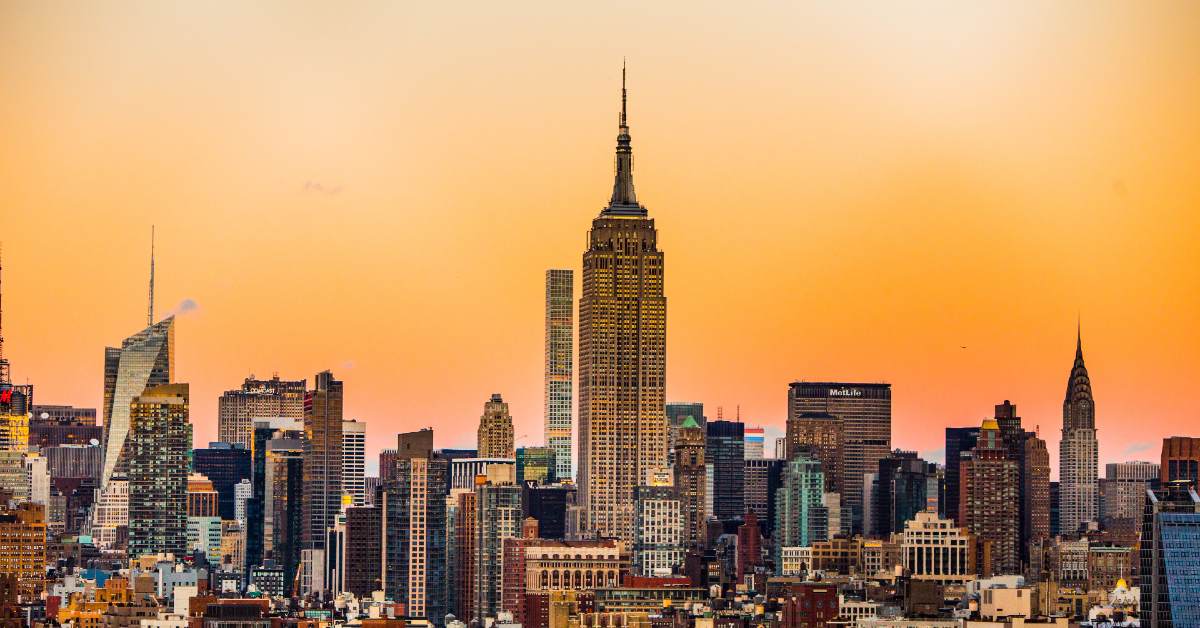
It’s an exciting time for cities across the country as they tackle the challenge of reducing their carbon footprint. To do so, many cities are mandating carbon footprint reduction in large buildings with failure to comply resulting in financial penalties. The progress of these laws has been encouraging so far, with many buildings already implementing changes to comply with the new requirements as deadlines approach. Since the implementation of laws such as Clean Energy DC, Local Law 97, and Building Energy Reporting and Disclosure Ordinance (BERDO), building owners and decision-makers have begun to make strides toward carbon footprint reduction to achieve local law compliance.
Table of Contents
Clean Energy DC
Washington, D.C. is taking bold steps to combat climate change by implementing Clean Energy DC. Given that buildings account for 75% of all greenhouse gas emissions in the city, Clean Energy DC was passed into law to ensure building owners reduce their carbon footprint. The goal is to reduce greenhouse gas emissions by 56% by 2032 and achieve carbon neutrality by 2050. This visionary program will require owners to focus on their building’s envelope efficiency, lighting, and HVAC systems.
Progress
Since implementing Clean Energy DC, the city has made significant progress in reducing greenhouse gas emissions and transitioning to cleaner energy sources. The Clean Energy DC 2022 Progress Report shared that:
- Washington, D.C. ranks 3rd on the 2021 Clean Energy Scorecard (up 2 spots since 2019)
- DC cut its citywide carbon footprint by 31% since 2006 (as of 2019)
- As of 2021, $57 million in savings for property owners was generated by the DC Property Assessed Clean Energy (DC PACE) through lower utility bills
- In 2021, DC Public Schools opened its first two net-zero energy schools
- 7.25% of the city’s power comes from renewable sources annually (up from 2.22% in 2012)
But the fight is far from over, which is why the city has launched Clean Energy DC 2.0 – a comprehensive plan that covers transportation, energy, and building sectors through 2045. In addition, in 2022, they passed a new law that requires all new construction to be constructed to net-zero-energy standards starting January 1, 2027. With a focus on community and stakeholder input, the city is committed to staying ahead of the curve and leading the way toward a sustainable future.
NYC Local Law 97
In 2019, New York City implemented Local Law 97. Buildings account for about two-thirds of greenhouse gas emissions in New York City, and this legislation imposes mandates on building owners to reduce their property’s carbon emissions. Buildings over 25,000 square feet are required to meet energy efficiency and greenhouse gas emissions limits by 2024. The goal is to reduce emissions by 40% in 2030 and 80% by 2050.
Progress
Over time, the emissions limits set by Local Law 97 will get smaller to help buildings work towards reduced emissions. Portions of Local Law 97 will phase in over time beginning in 2024 in a series of compliance periods:
- 2024-29
- 2030-34
- 2035-39
- 2040-49
- 2050+
In October 2022, the Department of Buildings released a list of buildings that must comply with Local Law 97. Then, in December 2022, they finalized Rule 103-14 for Local Law 97, which offers details on property types, emissions limits for the various compliance periods, renewable energy credits, and guidance for compliance.
According to the New York Times, as of August 2022, almost 50,000 buildings that must meet compliance are ready for the 2024 deadline. However, as we approach 2024, buildings in New York City must continue to make changes to comply with Local Law 97.
Building Energy Reporting and Disclosure Ordinance (BERDO)
Boston implemented the Building Energy Reporting and Disclosure Ordinance (BERDO). With buildings responsible for a staggering 70% of all greenhouse gas emissions in Boston, BERDO has been put in place to address this issue as Boston works towards its goal to become carbon neutral by 2050. This program requires affected buildings to be greenhouse gas-free by 2050. In addition, BERDO requires large buildings to report their greenhouse gas emissions and annual energy and water usage to the city.
Progress:
On March 16th, 2022, Phase I of BERDO regulations was adopted by the Air Pollution and Control Commission. Phase II of BERDO was split into two separate parts, with the first focusing on board member nominations, emissions standards, and other topics. The second phase, adopted on January 25, 2023, focuses on emissions factors and additional compliance mechanisms.
Phase III of BERDO launched on March 6th, 2023. This phase will focus on topics such as:
- Compliance with emissions standards
- Compliance schedules
- Building portfolios
- Fines and enforcement
- Additional regulations
- & More
As BERDO continues to be rolled out, business decision-makers across the city will continue to identify solutions to lowering their building’s carbon footprint to avoid fines and work towards the goal of net-zero emissions by 2050.
Business Owners Can Use Window Film for Carbon Footprint Reduction
As compliance deadlines loom for laws like Clean Energy DC, Local Law 97, and BERDO, business owners and building decision-makers need solutions that are effective and easy to implement to assist in carbon footprint reduction. That’s where 3M Commercial Insulating Window Film comes in. By installing this innovative product, building owners can immediately contribute to their community’s sustainability goals. 3M Commercial Insulating Window Film can:
- Reduce carbon footprint & energy consumption for local law compliance
- Upgrade the insulating performance of a single pane window to a double, and a double pane window to a triple
- Lower heating and cooling costs
- Earn LEED points
- Improve occupant comfort
3M Commercial Insulating Window Film is a timely, cost-effective solution compared to window replacement. Not to mention, its installation process is non-disruptive, creating little to no operational downtime making it an ideal solution for business owners.
Whether your city mandates carbon footprint reduction or not, by enhancing your building with 3M Window Film, you can significantly reduce energy consumption and help mitigate the effects of climate change. As cities continue to require carbon footprint reduction, 3M Commercial Insulating Window Film is a reliable, efficient, and cost-effective solution. Ready to take a step forward in climate footprint reduction? Contact us to learn more.

Energy Products Distribution is a Master Distributor of 3M Window Films, 3M Paint Protection Films, 3M Wrap Film Series 2080, 3M Protection Wrap Films, 3M Architectural Finishes, 3M Ceramic Coatings, and Windshield Skin. We sell our products to professional installers throughout the US who provide turnkey installations (labor and material) to end-users in the automotive, commercial, government, and residential markets. Contact us to learn more about the benefits of these products.









